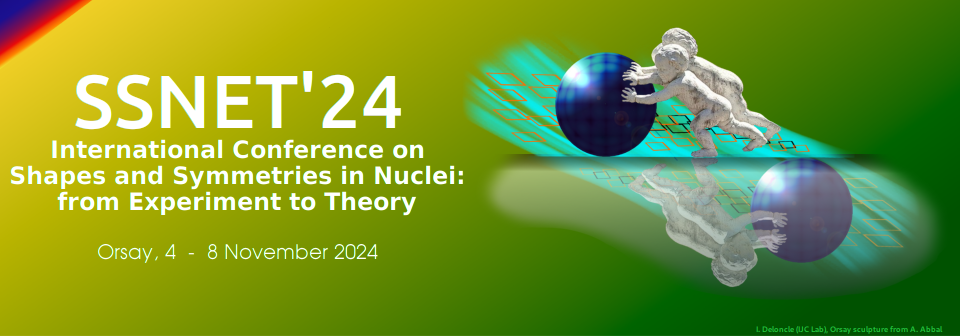Présidents de session
Session 12: Molecular symmetries in subatomic systems: from theory to experiment
- Jerzy Dudek (IPHC and Université de Strasbourg, France)
The development of worldwide rare isotope beam facilities has brought many new insights in nuclear physics. In particular, nuclei with exotic deformation have acquired great interest over the years for the challenges and implications it involves. Theoretically, relativistic density functional theory has achieved great success in describing many nuclear phenomena over the past several decades....
In recent years there has been an increasing interest in studies of exotic nuclear shapes and underlying symmetries. Combining a realistic phenomenological mean-field approach based on an arbitrarily deformable Woods-Saxon potential, numerous large scale calculations of nuclear energies in multidimensional deformation spaces were performed indicating rich realisations of nuclear shape...
We would like to present new results addressing the issues of nuclear stability induced by the presence of exotic symmetries in heavy nuclei. These mechanisms can in turn be seen as resulting from the specific shell effects (significant shell gaps in the single nucleon energy spectra) described using the language of magic numbers. In our context, we refer to them as 4-fold magic numbers, since...
Symmetries play a determining role in physics, guiding the frontier research of quantum systems, in particular on the sub-atomic level. The results of the group theoretical analysis supported by realistic mean field calculations predict existence of tetrahedral symmetry in many atomic nuclei throughout the Mass Table. Corresponding nuclear configurations are associated with relatively strong...
The cadmium isotopes ($Z\!=\!48$) since long have been considered as textbook examples of spherical-vibrator motion and U(5) dynamical symmetry in nuclei. On the other hand, detailed studies, using complementary spectroscopic methods, have provided evidence for marked deviations from such a structural paradigm [1,2]. Previous attempts to explain the observed discrepancies in $E2$ decays relied...

